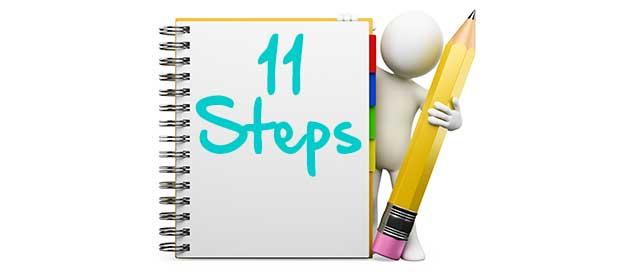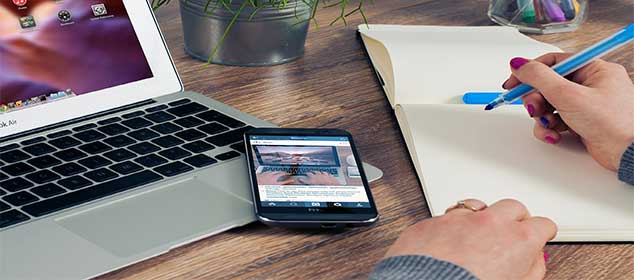Signing Off
Sales copy is almost always written out as a letter—a personal message from you to your buyer that hits on exactly why they need that particular product. Signing off is a big part of the letter process and the proper signoff can drive conversions, even after the order box.
Use a Signature and Personalize
At the end of your sales letter, you should have a signature that mimics your own. You can either sign this using an iPad or tablet PC or your printer and scanner, there are free tools that will produce JPGs or PNGs of your name in a variety of fonts. The goal is to make it look like a real signature, not a giant-fonted version of your name.
Summarize the Page in a Paragraph
Before your signature, sum up your page in one final wrap-up. Believe it or not, many people will get to the bottom of the page and still be reading without having decided. Others will just scan directly to the bottom to see what’s there. Either way, make your case one final time in less than 100 words, pitching your product and reminding them of everything they’ll get by acting on it.
Always Use the P.S. Section
Most of your readers will scan to the bottom, so make sure you use the P.S. section carefully. Have clear messages that highlight the most valuable points on your sales page. Mention your refund policy, the overall “value” of your product, any limited-time offers for bonuses, and include the actual problems you’ll be solving and benefits your readers will be gaining if they opt to buy your product.
Additional Testimonials
At the very end, I often include one last testimonial. Some marketers like to save the last word for themselves but, through testing, I’ve found that a success story from a customer is much more effective in driving your reader to reconsider the offer and send them back to the product description part of your page.
Limit Outbound Links
A well-designed sales page should be a single entity that holds the attention of your reader at all times. If you want to use a video or audio file, have it load directly on the page. If you want to show them another site, use a screenshot. Never send your readers to another website from your sales page. Your goal is to get and hold their attention until the very last order box appears at the bottom of the page.
Analytics and Split Testing
Although this doesn’t fit into any specific category, it is incredibly important. From the moment you launch your site, you should be tracking and analyzing your visitors, their tendencies, and statistics such as:
- Bounce Rate
- Click-through Rates
- Time on Site
- Return Visitors
- Email Submissions
- Sales Conversions
Each piece of data above is vital to understanding how your page is working, what your readers are doing, and where you are losing them. For example, if you see that your bounce rate is under 40%, your average time on site is 4 minutes and your click-through rate to the order form is 7%, you’re doing very well on all fronts. But if your actual conversion rate is only 1%, something is happening that keeps otherwise interested buyers from ordering. You may need to reassess how you present the value and cost of your product before they hit your order page. That’s why split testing, when done properly, is so important.
Say, for example, you have a sales page that consists of a headline and an image along with the remainder of the sales copy. If you were to split test this page by copying it and changing both the headline and the image, this would be a poor split test. Even if the results came out much better than your original sales page, you would never know what caused the conversion to rise – the image or the headline? When split testing it’s always best to change only one thing at a time and then run your test, choose the best converting page among the two and then clone the new “winning” page, make another single change and run the test again.
Edit, Proofread, Review, and Repeat… Constantly
When you finish a sales letter, it needs to be not only polished, but passed around and proofread by more than just you and your family. There are a few reasons for this.
You want your readers to know exactly what they’re getting out of your page. If you don’t have test readers go through it, you’ll never know if you’re missing some key points.
You just wrote it, so your perspective is biased. But a fellow marketer in another state or country is not biased and will tell you if your author intro or your testimonials are running a bit weak. Too many marketers get caught up in the pre-launch, product creation, and pretty pictures that go with a new site. In reality, your copy is the single most valuable part of your launch, so spend as much time on it as you can to make sure it is as close to perfect as you can get.
Conclusion
Copywriting is just as much art as it is science. There are dozens of rules and theories that are constantly being tested by the industry’s best. But, at the end of the day, your job is still to move someone emotionally and convince them to make a decision to click your buy button. So, when crafting your all-important sales copy, always listen to your own heart and what you feel when you work with your product.
In addition to all that we’ve covered about copywriting so far, it is critical to test, retest, and experiment continuously. Unless your sales copy is converting 100%, there is always room for improvement.




